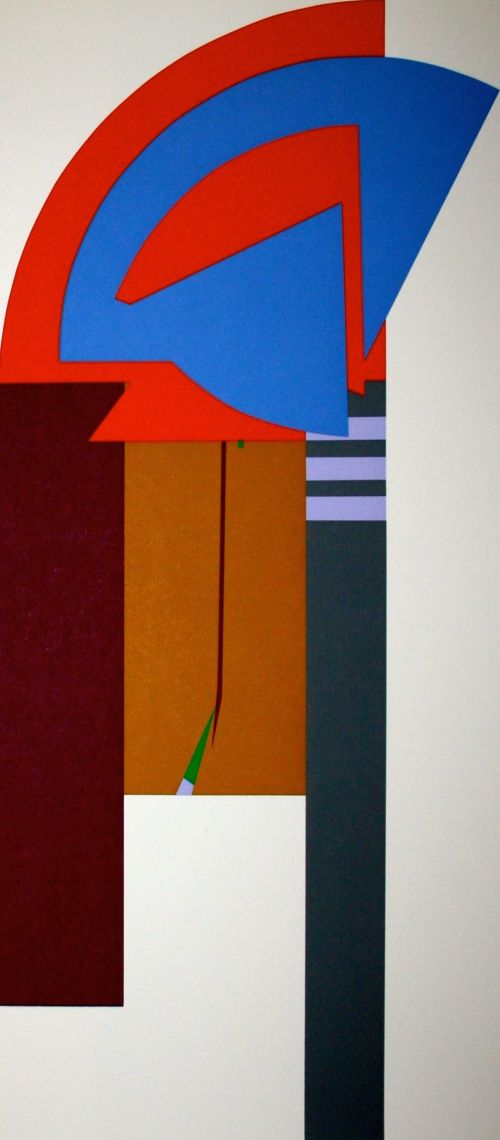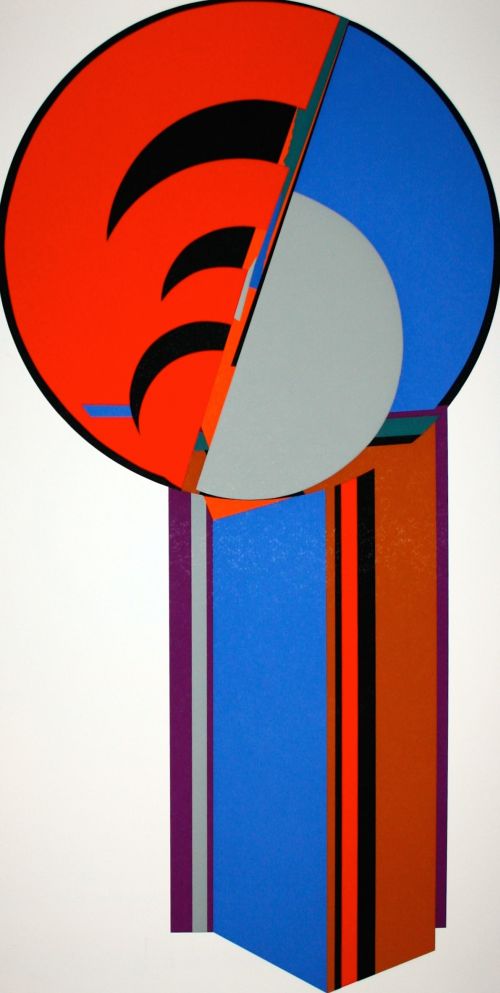About the artist:
American artist, writer and UFO researcher, one of the leading figures of Abstract Expressionism.
A contemporary of Franz Kline, Mark Rothko, Robert Motherwell, and Willem De Kooning, Budd Hopkins was a
noted Abstract Expressionist admired for the vibrant spectrum of his work characterised by the bold brushwork
of action painting, and the clean-cut, emblematic colors of hard-edged abstraction, who first came to widespread
attention when he exhibited at the Festival of Two Worlds in Spoleto, Italy, in 1958.
A painter and sculptor, Hopkins' work - which by the late 1960s included Mondrian-like paintings of huge
geometric forms anointed with flat planes of vivid color — is in the collections of the Metropolitan Museum of Art
and the Museum of Modern Art in New York, the Corcoran Gallery of Art in Washington and the British Museum,
among others.
After the award of a Guggenheim fellowship in 1974, Hopkins’ art turned to large, quasi-architectural sculptures
that seemed to spring from primordial myths. Temple of Apollo With Guardian XXXXV is one such example, which
The New York Times called "part house of worship, part archaeological ruin, part sacrificial altar".
Even as he moved away from Abstract Expressionism, these works retained the use of intense colors and hard-
edged forms, as they brought together the vocabularies of painterly abstraction and abstract geometry.
It was during this period that his abiding interest in ritual, worship, cruelty and superstition found its purest
expression.
In the 1980s, because of Hopkins well-known fascination with popular theories of alien abduction, critics saw
correlations between what they identified as spectral shapes in the geometry of his work and his growing
obsession with the stories of those who believed they had been visited and experimented upon by
extraterrestials.
Although Hopkins always dismissed such interpretations of his work, this interest in alien visitation led to the
writing of the best-selling book "Intruders" (1987), in which he documented the claims of those who had
reportedly experienced being abducted.
As the first person to collect and publish such stories in quantity, Hopkins was widely credited with having begun
the alien-abduction movement, a subgenre of U.F.O. studies.





